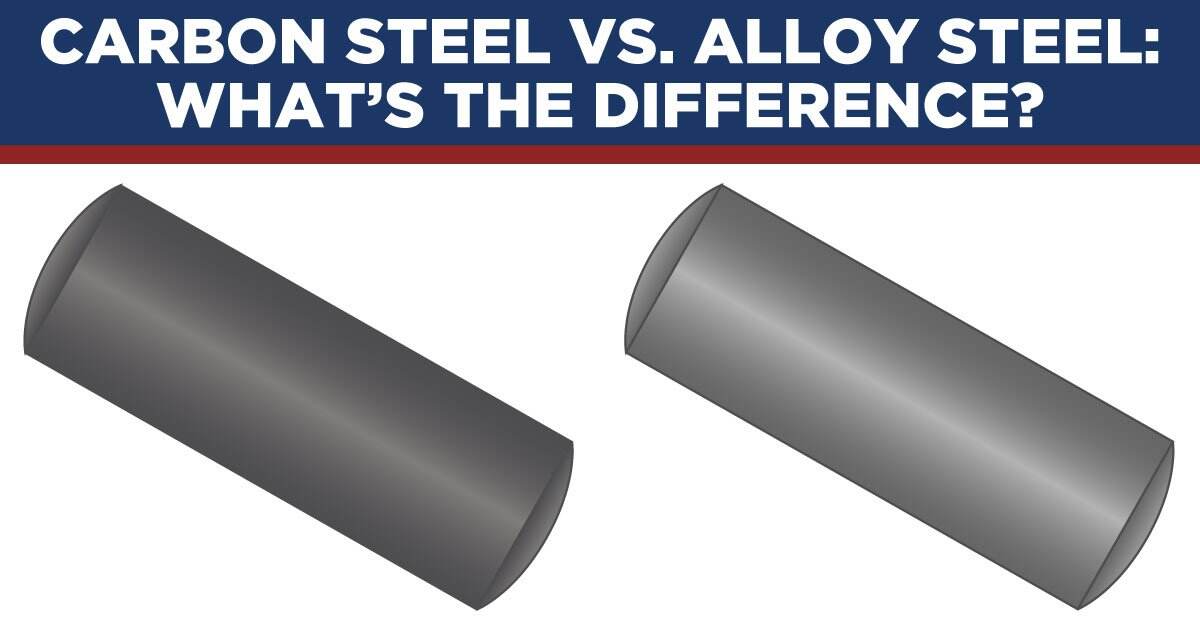Alloy Steel vs Carbon Steel: Key Differences, Applications, and Benefits
In the steel industry, two of the most commonly used materials are alloy steel and carbon steel. While both are strong, durable, and widely used in construction, manufacturing, and automotive industries, they have different properties that make them suitable for different applications.
This guide will help you understand the difference between alloy steel and carbon steel, their composition, strength, corrosion resistance, cost, and applications. By the end, you’ll have a clearer idea of which one fits your project best.
What Is Carbon Steel?
Carbon steel is a type of steel that mainly contains iron and carbon. It’s one of the most commonly used steels worldwide due to its affordability, ease of machining, and good mechanical properties.
Depending on the carbon content, carbon steel can be divided into:
Low carbon steel (mild steel) – less than 0.3% carbon, soft and easy to shape.
Medium carbon steel – 0.3–0.6% carbon, stronger but less ductile.
High carbon steel – more than 0.6% carbon, very hard but can be brittle.
Key advantages of carbon steel:
Cost-effective and widely available.
Easy to weld and machine.
Ideal for construction, structural components, tools, and car parts.
👉 Learn more about our carbon steel products to find the right material for your project.
What Is Alloy Steel?
Alloy steel is carbon steel with additional alloying elements such as chromium, nickel, molybdenum, manganese, or vanadium. These elements improve the steel’s strength, toughness, hardness, and corrosion resistance.
Depending on the amount of added elements, alloy steels can be:
Low-alloy steels – less than 5% alloying elements.
High-alloy steels – more than 5% alloying elements.
Key advantages of alloy steel:
Higher strength and durability.
Better resistance to corrosion and wear.
Excellent performance in demanding environments like oil & gas, machinery, and marine structures.
Alloy Steel vs Carbon Steel: Main Differences
Here’s a clear comparison of alloy steel vs carbon steel based on composition, strength, cost, and other key factors:
| Property | Alloy Steel | Carbon Steel |
|---|---|---|
| Composition | Iron + carbon + elements like chromium, nickel, vanadium | Primarily iron and carbon |
| Strength & Hardness | Generally stronger and harder due to alloying elements | Varies with carbon content; can be very hard but may be brittle at high levels |
| Corrosion Resistance | High corrosion resistance | Low corrosion resistance unless coated or treated |
| Cost | More expensive (additional elements & processing) | More affordable |
| Machinability & Weldability | More difficult to machine and weld | Easier to machine and weld |
| Applications | Heavy-duty applications, high-stress parts, oil & gas, power generation | Construction, automotive parts, tools, household items |
Which One Should You Choose?
Choosing between alloy steel and carbon steel depends on your budget, performance needs, and working environment.
✅ Choose Carbon Steel If:
You need a cost-effective material for general applications.
You are working on structural projects like bridges, building frames, or machinery parts.
You require easy machining and welding.
✅ Choose Alloy Steel If:
You need extra strength, durability, and resistance to corrosion.
Your project involves high temperatures, pressure, or harsh environments.
You want longer lifespan and better performance over time.
Common Applications of Alloy Steel and Carbon Steel
Applications of Carbon Steel
Construction beams and structural frames
Car parts (frames, body panels)
Tools and machinery
Bridges and pipelines
Applications of Alloy Steel
Oil and gas pipelines
Pressure vessels and boilers
Heavy machinery
Marine structures and aerospace components
Cost Comparison: Alloy Steel vs Carbon Steel
Carbon steel is usually cheaper because it contains fewer alloying elements and is easier to produce.
Alloy steel, on the other hand, is more expensive but also offers better performance and longer service life. While initial costs are higher, the total cost of ownership may be lower due to reduced maintenance and replacement needs.
💡 Tip: If your application involves corrosion or high stress, alloy steel may save money in the long run.
How to Buy the Right Steel Product
When buying steel materials, consider the following factors:
Chemical composition and mechanical properties
Thickness, width, and surface finish
Welding and machining requirements
Compliance with international standards (ASTM, EN, JIS)
👉 Looking for high-quality steel products? Get a quote for alloy and carbon steel from our experienced sales team.
FAQs About Alloy Steel vs Carbon Steel
1. Is alloy steel stronger than carbon steel?
Yes. Alloy steel is generally stronger and more durable because of the added elements like chromium and nickel. It performs better under high stress and temperature.
2. Can carbon steel resist corrosion?
Carbon steel has low corrosion resistance, but applying zinc coating (galvanizing) or painting can improve its durability. For environments with moisture or chemicals, alloy steel is usually a better choice.
3. Which steel is easier to machine and weld?
Carbon steel is easier to work with compared to alloy steel. Alloy steel often requires special tools and welding techniques.
4. Which one is more cost-effective?
Carbon steel is cheaper upfront, but alloy steel may offer better long-term value in demanding applications due to its strength and corrosion resistance.





